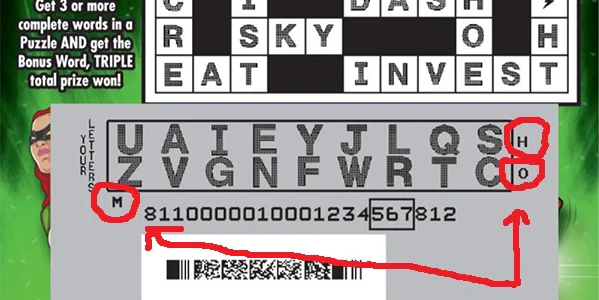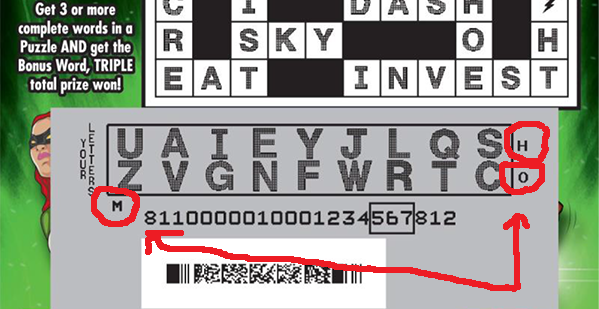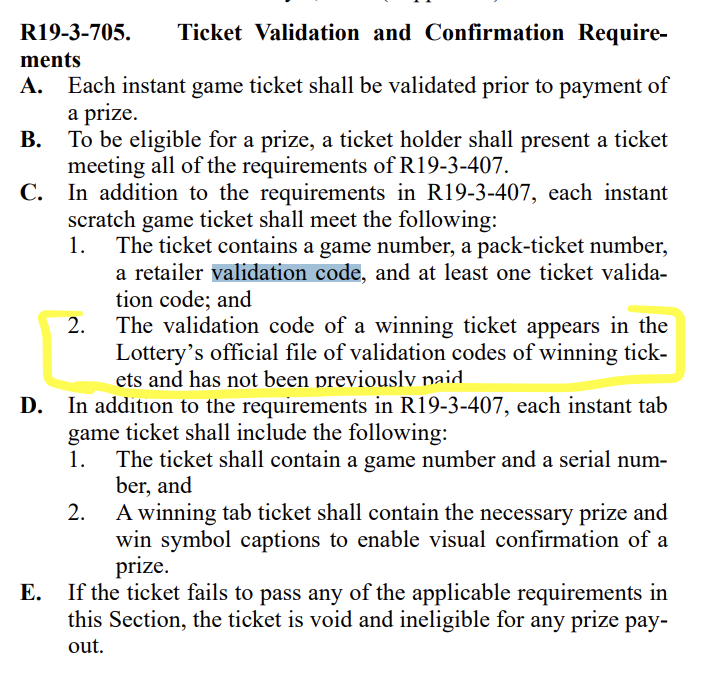


The excitement of scratching off a ticket to reveal if you’re a winner is a thrill many enjoy. Besides the immediate gratification of revealing a prize, each scratcher ticket contains something less visible but equally important: a validation code. In this article, we delve into what validation codes are, how they work, and why they matter to both players and the lottery operators.
A validation code is a unique alphanumeric sequence assigned to each scratcher ticket by the lottery. It serves as a vital identifier, helping lottery operators and players verify the authenticity and validity of the ticket. These codes are usually hidden beneath the latex scratch-off surface, ensuring they are revealed only when the ticket is scratched. These codes are encrypted in a way that allows lottery systems to quickly verify their authenticity. Some may indicate the prize amount, ticket status, or other relevant information. There are two kinds of codes I refer to:

Of course! That’s the point of the code, to indicate with no doubt that this is one of the remaining prizes. However, can you see the code before you buy it? No, usually the code is hidden under the scratch-off layer, along with the bar code itself. No clerk would let you scratch off the code before buying. The story of a statistician who spotted a pattern on the scratchers in Ontario, Canada, published in Wired in 2011, is often repeated as “cracking the code” to the lottery. However, he spotted a flaw in the game design on the face of the scratch game, not the letter code itself. Assuming you spotted such a flaw, you would have to convince a clerk to let you examine the tickets – normally hidden under the counter – before buying them. The best strategy then is to buy tickets in bunches, in a number statistically offering the best chance of buying a winner without spending more than necessary.
If It’s Not a Winning Code, You’re Not a Winner
When you scratch off all the little squares on a scratch game, you may find that hey, this is a win! Look at the line in bingo, or the three cherries, or the matching bells – this is a win! Take it to the store and give it to the cashier. The first thing they will do is scan the code – no ding? No bling. I had this happen to me once with a scratcher game modeled after the card game of blackjack. But the cashier didn’t care how many times I pointed out that hey, this is technically a win – look right there! These markers show the I won the game per the rules of blackjack. No dice – they just told me to contact the Lottery Commission if I wanted to complain.
And I did. I mailed them the original ticket (keeping copies for myself), with a letter explaining the error, and an email saying the same. But the Lottery’s reply: if it doesn’t have a winning barcode, it isn’t a winner. For example, Arizona scratcher codes are proof that the ticket is on the Arizona Lottery’s register of winning tickets, and its rules require that the code be validated before paying out the prize. See this excerpt from Arizona’s Administrative Code on the lottery rules:

Unfortunately, some shady store clerks have attempted to scam winners out of their winnings by claiming the scratch off ticket wasn’t a winner. In the case of a woman in Massachusetts, the clerk told her to ignore the win sound from the scanner, then refused to give back the ticket – despite it being a “losing” ticket. Rightly, the customer pressed her, and the clerk gave her the $500 in winnings. Still, the ticket was actually worth double that; the customer wasn’t sure of the actual prize. In Wisconsin, police took down a clerk routinely telling customers the tickets weren’t winners after supposedly scanning them, then pocketing the tickets and claiming the prizes for herself.
In these cases, the validation code was proof that the customer won, despite the clerks’ claims. So when you hand over a scratcher to the clerk: know how much it should be worth, and don’t ignore the “win” chime from the scanner.
Validation codes are a crucial aspect of lottery scratchers, ensuring security, authenticity, and fairness. By revealing these codes only upon scratching the ticket, lotteries create a tamper-proof mechanism that protects both players and the lottery organization. Understanding the validation code can add an extra layer of insight into your scratcher experience. So, the next time you scratch off a lottery ticket, remember, the validation code hidden beneath holds the key to a fair and thrilling experience. Happy scratching and good luck!